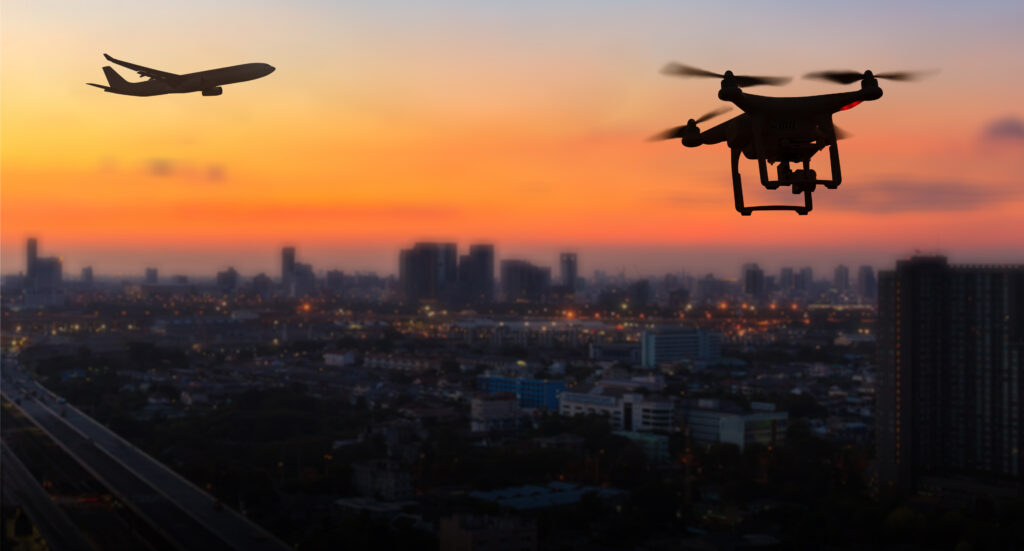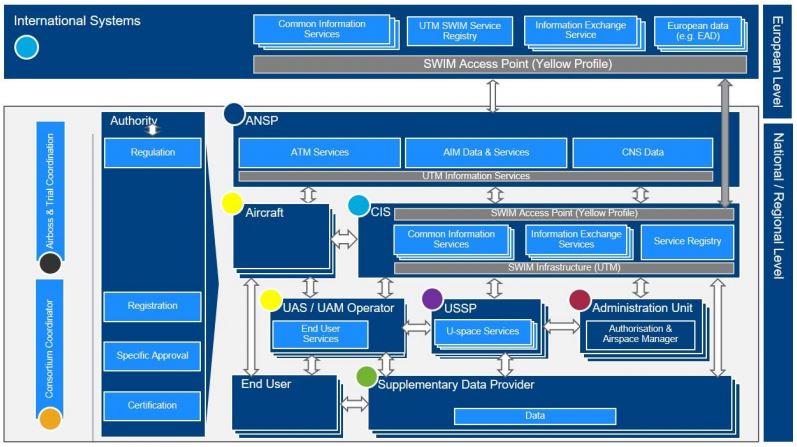The SESAR JU project
“GOF 2.0 Integrated Urban Airspace Validation”
The total cost of GOF2.0 is €5,484,382.50
of which 70% will be funded by SESAR JU
With the further enhancement of unmanned aerial vehicles (UAVs) and air taxis in the rapidly growing drone market comes the need for the evolution of technologies and framework conditions for their safe coexistence with manned aircraft.
The SESAR JU project GOF 2.0 Integrated Urban Airspace Validation, with a consortium of 15 members, will focus on the safe, secure, and sustainable integration of unmanned aerial vehicle and air taxi operations in urban airspace.


The future of transportation lies in the third dimension – the sky – and will revolutionise the way we perceive urban mobility. 15 scientific and commercial partners from the drone and aviation industry will use their expertise and technology for the safe, secure and sustainable integration
of unmanned aerial vehicles and air taxi operations in urban airspace.

Building on the key learnings and results of the SESAR JU Gulf of Finland (GOF) U-space project, which successfully demonstrated the safe airspace integration of unmanned aerial vehicles in summer 2019, GOF 2.0 intends to safely, securely, and sustainably demonstrate operational validity of serving combined unmanned aerial systems (UAS), electric vertical takeoff and landing (eVTOL), and manned operations in a unified, dense urban airspace using existing ATM and U-space services and systems.
The work leading up to the advanced flight trials highlighted the importance of building a scalable U-space architecture and ensured that the technical environment relies on international standards using system wide information management (SWIM) principles. The GOF U-space project also underlined the fact that it is equally important to ensure that the market is interoperable and open, with authority oversight to enable easy sharing of safety-related information.


GOF 2.0 is an important enabler for the further development of the drone market and will deliver the technical components (services, software, competencies, practices) required to cost-efficiently operate autonomous and semi-autonomous drones beyond visual line of sight (BVLOS) in the shared airspace. This is made possible by repurposing already available ATM commercial off-the-shelf components and integrating the latest U-space technology.

AIRBUS URBAN MOBILITY GMBH
Aviamaps
CAFA Technology
Dimetor
Droneradar
Estonian Air Navigation Services
EHang
Fintraffic ANS
FREQUENTIS
Poznan Supercomputing and Networking Center
Polish Air Navigation Services Agency
Robots.Expert
Threod Systems
Unmanned Systems Limited
Vaisala Oyj
The GOF 2.0 consortium, consisting of 15 scientific and commercial partners from the drone and aviation industry, will use its expertise and technology to ensure safe flight operations in all classes of airspace in order to provide all airspace users with fair and efficient access to the shared airspace. The GOF 2.0 project is one of several projects managed by the SESAR Joint Undertaking that are dedicated to U-space, the European Commission’s initiative for the safe and secure integration of drones into the airspace.
| Cookie | Duration | Description |
|---|---|---|
| cookielawinfo-checbox-analytics | 11 months | This cookie is set by GDPR Cookie Consent plugin. The cookie is used to store the user consent for the cookies in the category "Analytics". |
| cookielawinfo-checbox-functional | 11 months | The cookie is set by GDPR cookie consent to record the user consent for the cookies in the category "Functional". |
| cookielawinfo-checbox-others | 11 months | This cookie is set by GDPR Cookie Consent plugin. The cookie is used to store the user consent for the cookies in the category "Other. |
| cookielawinfo-checkbox-necessary | 11 months | This cookie is set by GDPR Cookie Consent plugin. The cookies is used to store the user consent for the cookies in the category "Necessary". |
| cookielawinfo-checkbox-performance | 11 months | This cookie is set by GDPR Cookie Consent plugin. The cookie is used to store the user consent for the cookies in the category "Performance". |
| viewed_cookie_policy | 11 months | The cookie is set by the GDPR Cookie Consent plugin and is used to store whether or not user has consented to the use of cookies. It does not store any personal data. |